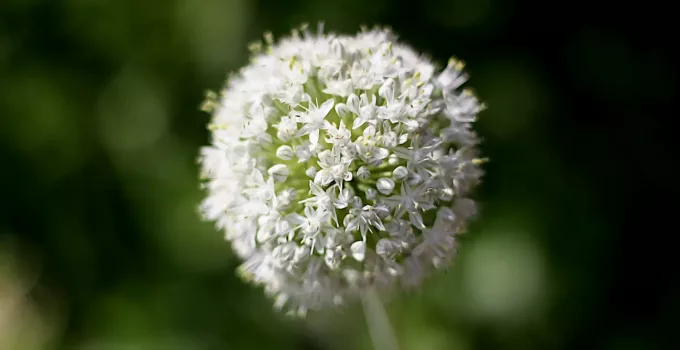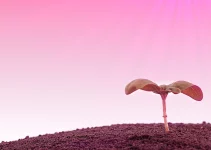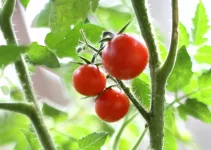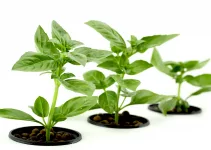The mention of hydroponics is pretty much instantly correlated to growing lettuce but let’s expand those horizons and let’s learn how to grow hydroponic onions.
However,
Maybe I should be more specific and make something clear from the beginning: should you want to grow onions hydroponically? And what kind of onions really?
The point is:
Maybe you’ll read this article and decide that growing hydroponic onions is too complicated, which is completely fine. You can experiment with other leafy greens, herbs, and vegetables that interest you, there are plenty of plants to grow in hydroponics systems.
I must admit that I’m much more interested in growing green onions hydroponically because I use a lot of green onions when making Asian food.
Table of Contents
Can You Grow Onions Hydroponically?
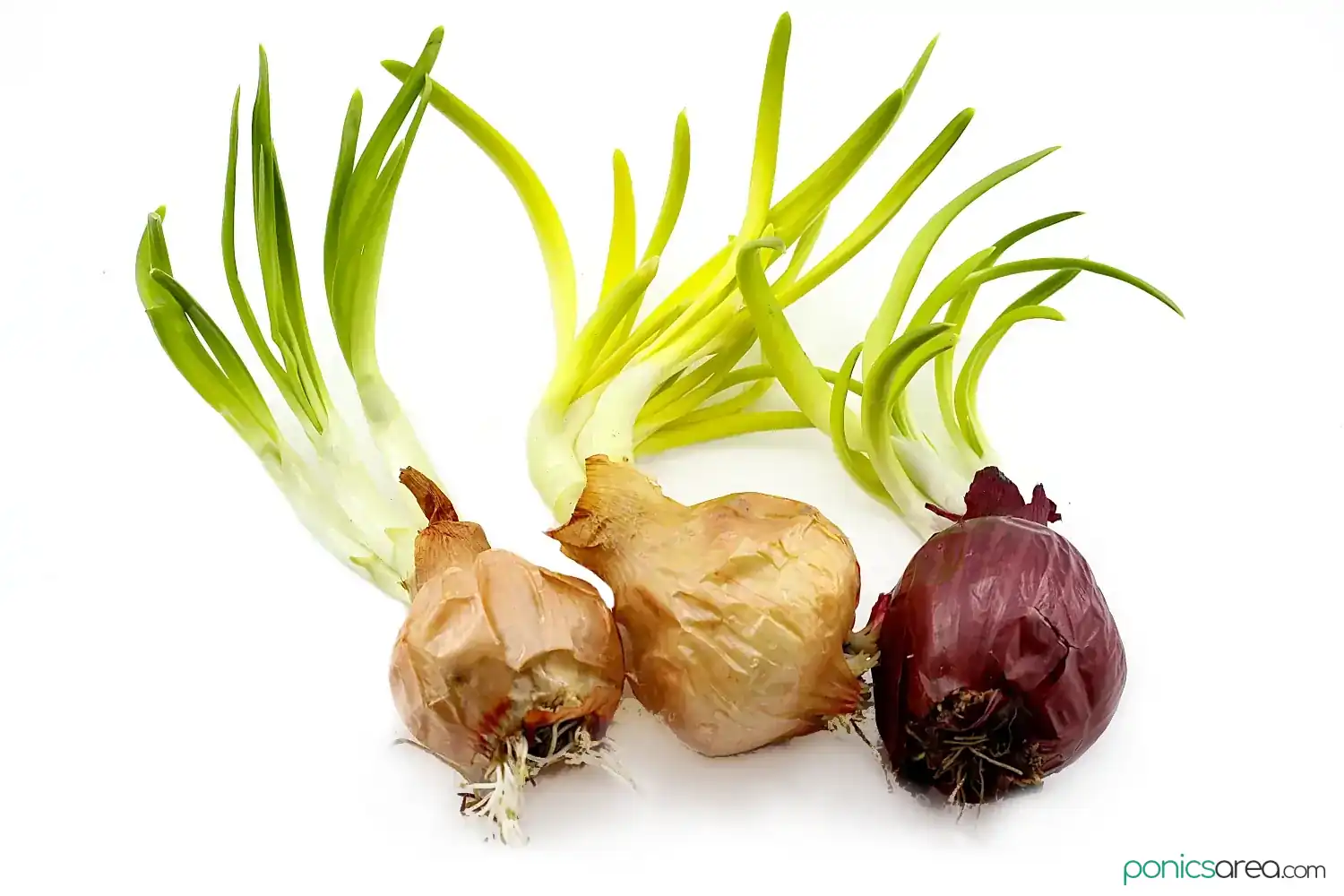
Hydroponics is the alternative to classic agriculture. Instead of growing plants in soil, hydroponics utilizes water and nutrient-rich solution and growing mediums.
These are some of the fundamentals and we’ll expand on these because, in theory, you can grow onions hydroponically.
Why do I mean by in theory?
I just mean that it’s not as easy to hydroponically grow plants that traditionally grow underneath the soil. Vegetables like onions, potatoes and carrots are vegetables that grow underneath the soil.
Due to that, these plants might require more work to be grown in a hydroponic system that uses water instead of soil for feeding and sustaining the plants.
We could pretty much conclude that growing onions shouldn’t be the first vegetable you attempt to grow in any type of hydroponic system. It’s better to start off with lettuce and herbs until you get more used to the whole process.
I would say that trying out for green onions in hydroponics is much more approachable than growing bulb onions hydroponically. Even for those of you who are more experienced.
If you want another challenge, ready my article on how to grow hydroponic potatoes.
How to Grow Hydroponic Onions: Complete Guide
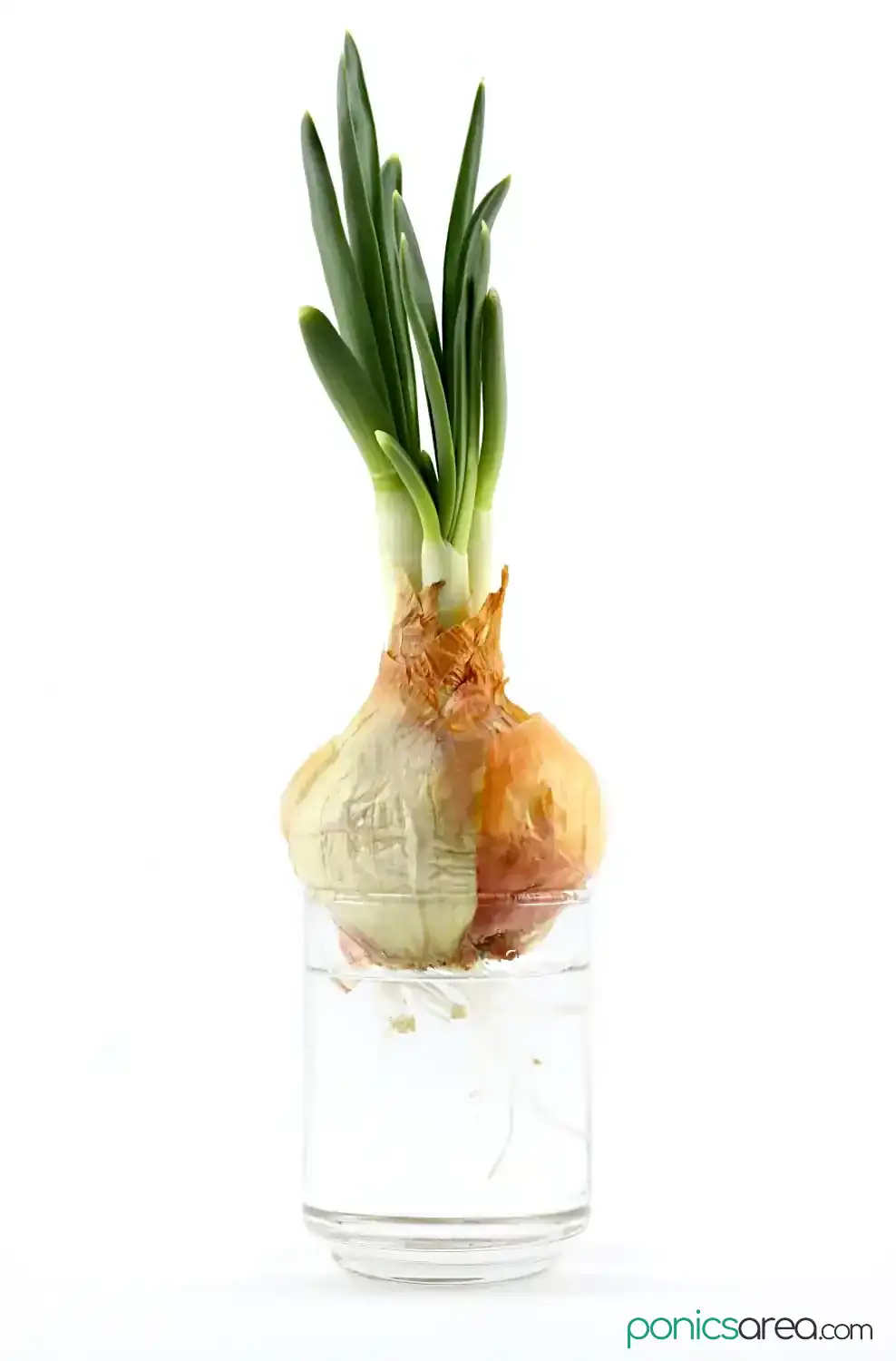
What you need for growing hydroponic onions:
- a hydroponics system – you can buy one or you can make your own if you want to save up money (making a deep water culture DWC system is one of the best systems to start with)
- nutrient-rich solution (think of it as plant food) – once again, this can be bought or it can be made at home from 3 ingredients (NPK fertilizer, calcium nitrate and epsom salt)
- grow lights – onions will require at least 12 hours of light for strong growth; grow lights are needed for indoor gardening
- you can germinate the seeds or you can start off with onion bulbs to speed up to the process – I recommend the bulb method
- growing medium – even if you’re starting with seeds or bulbs, you need to plant either in a growing medium
- choosing the growing medium is up to you: rockwool is one of the best growing media but you can also use coconut coir, perlite, etc.
- the growing medium will be held by net pots, which will be inserted in the hydroponics system, where it will absorb water and nutrients and deliver it to the roots
- 3 inch net pots will work for growing hydroponic onions
If you choose to germinate the seeds, it will take up to 10 days. If you’re starting with seeds, definitely use rockwool otherwise the seeds will slip right through the pebbles.
I don’t see the point in going through the trouble when you can use bulbs. Growing hydroponic onions from bulbs is quite fast, in a few days the leaves will start to show.
How to Grow Hydroponic Onions from Seeds
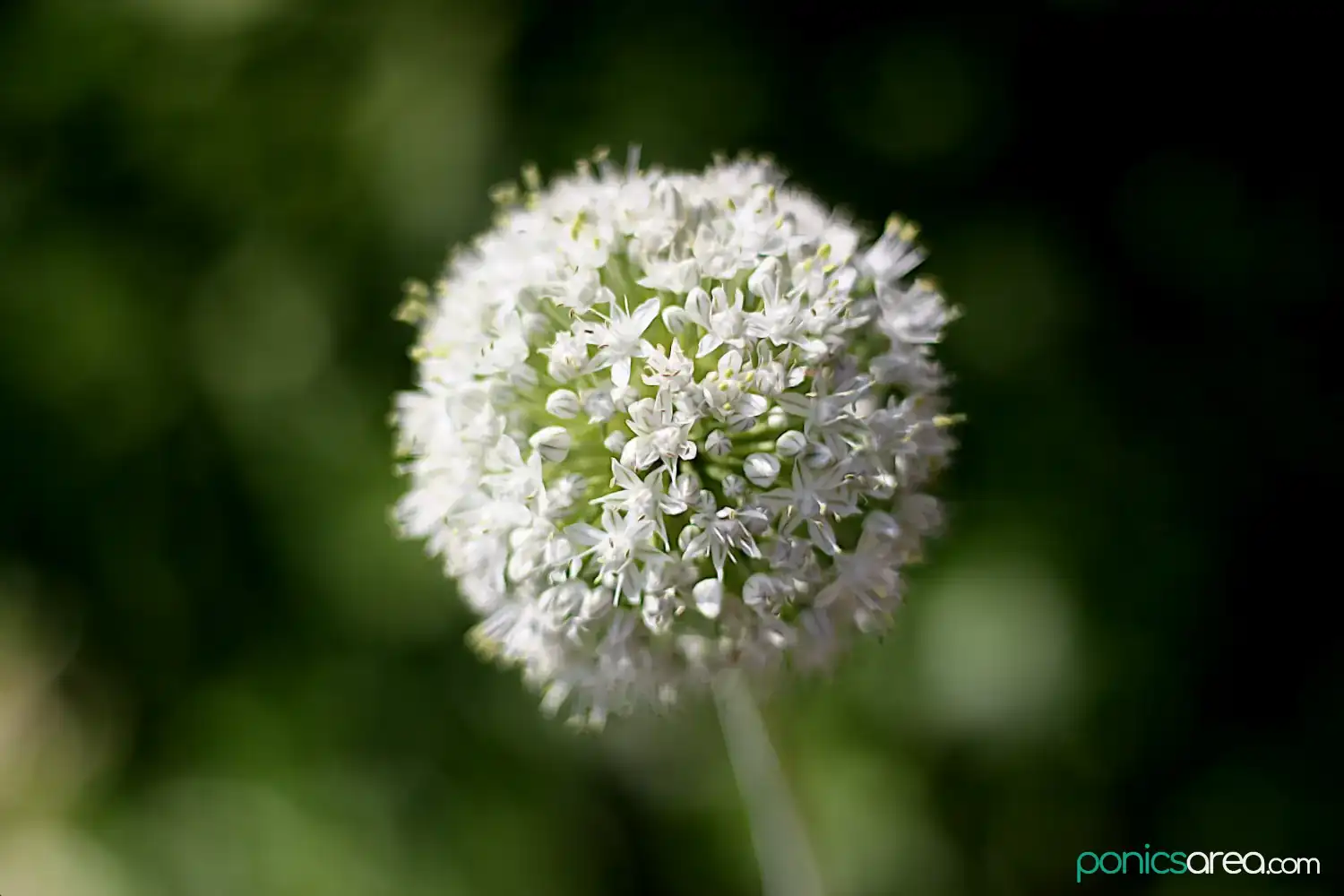
Seeds are easy to find and they’re quite inexpensive. Many people might want to start growing hydroponic onions from seeds, whether we’re talking about green onions or yellow or red or any other type there is.
If you’re aiming just for green onions hydroponics, I recommend choosing the evergreen bunching variety, which is grown exclusively for green onions, not for bulbs.
The same process can be applied to bulbs, too, because in both cases the seeds can be grown for a few days outside the hydroponic system and then transplanted when they’re a bit more powerful and ready to adapt to the system.
Germination
First you need to germinate the seeds.
When germinating the seeds, you don’t need to add any nutrient solution. You just need to spray them with water because the seeds already have all the needed nutrients.
If you use nutrient solution or fertilizers on the seeds, you can actually harm them and make them unable to become seedlings.
You can use a germination tray because it has its own dome and makes the germination process really easy.
Or you can use the hydroponics system right from the start, just make sure to only use water until the seedlings appear. Once the leaves start to show up, you will move to the stage of adding nutrient solution.
Once the nutrients are added to the water, wait for an hour and then measure the pH, it might need some adjustments.
Where to Buy?
Check Price and User Reviews Here
Hydroponic Onions Conditions
Rockwool is the best growing medium for germinating the seeds. It will hold them snugly.
It will take about 10 days at temperatures of 55-75 degrees Fahrenheit for the onion seeds to germinate.
From seeds to green onions it can take about 50-60 days.
For cultivating bulb onions (yellow, red) as much as 3-4 months will be needed. It depends whether you’re starting off with small bulbs or using seeds.
For optimal growth, the average hydroponic pH of 5.5 – 6.5 is good.
They need 12 hours of artificial light. You can use a timer for the lights, that way you don’t have to switch them On and Off manually.
Tap water can be used even though it contains chlorine. Just let is sit for a while, a few hours, so that some of the chlorine can evaporate. Rain water is ideal because it has a lower pH.
Making Your Own Hydroponics System
If you want to make your own hydroponics systems, the DWC (deep water culture) is the one to consider. It’s pretty easy to make for beginners and it’s also relatively cheap.
The problem is that it’s much more appropriate for greenhouses, especially if you want to become involved in growing hydroponic onions.
You will need:
- a reservoir (tank that can be an old aquarium or a water container)
- air pump – to add oxygen to the water, it needs to be on 24hrs a day
- air stone – to circulate the nutrients and prolong the life of the nutrient solution
- tubing (to connect the air pump and the stone)
- a polystyrene raft to float on the water containing the nutrient solution (if you’re using a plastic container, the raft is replaced by the lid with holes in it)
- growing medium that is placed in net pots
- grow lights – every system needs them, full-spectrum LEDs are an awesome choice and they save energy
Where to Buy?
Check Price and User Reviews Here
Nevertheless, you should be aware of the fact that drip systems are some of the best for growing larger plants. But they’re a lot more complicated to build at home, they’re not feasible for beginners. Drips are some of the most used systems by commercial growers.
If you’re using a DWC, place the germinated seeds or the bulbs about halfway into the growing medium. The growing medium will be held by the net pots.
Place the pots into the individual holes of the raft/grow tray. Then let them float on the water containing the nutrients.
You definitely need sunlight or grow lights.
It’s important to plant the bulbs at about the same height so that when the raft floats all the roots are immersed in water.
Using small hydroponic systems
If you only have a small hydroponic system, like the AeroGarden models and the rest that fall into the category of at-home kits that can be set-up on a kitchen counter, then you shouldn’t consider growing hydroponic onions.
At most, focus on hydroponic green onions in these kind of indoor gardens.
I will still say that in the case of these particular systems, it’s best to stick to growing chives hydroponically.
Chives can be grown alongside herbs like mint and basil. Herbs are easy to grow for beginners, just like lettuce is. Plus, they’re delicious. Just thinking of an omelet with chives makes me hungry.
Where to Buy?
Check Price and User Reviews Here
Harvesting Hydroponic Onions
Harvesting hydroponic onions is very similar to what takes place when they grow in the ground.
The onions stop growing completely when flowers start appearing. They’re completely ready for harvest at that point.
Another indicator for harvest is the leaves that start to flop over.
You will gently pull them from the growing medium and let them dry for a day or two. Once they’re dry, you can clean them off of all the extra dried out leaves and then store them in a dry cool place. You won’t be storing them for long because they will be consumed quickly.
How to Grow Hydroponic Green Onions: Easiest Method
This method works wonderfully for those who don’t want to go in too deep into the whole hydroponics universe.
It’s definitely for those who don’t want to buy or build their own hydroponics system. And I’m pretty sure you’ve seen plenty of it on various social media sites.
It’s the most basic method for growing and enjoying green onions during any season.
So,
This is not a method for growing bulb onions but it works as the easiest method to obtain green onions with hydroponics. It’s a bit improper to call the setting hydroponics but it still fits because water is used instead of soil. It just doesn’t imply using a nutrient-rich solution, it’s absolutely simplified.
This YouTube video is very short but teaches you everything you need to know about the simplest way to grow green onions in hydroponics. Let me also tell you about what this method consists of.
The Plastic Bottle Method for Green Onions
- you need fully grown bulb onions (cooking onions) – red or yellow, it doesn’t matter
- for each bulb you need a plastic bottle (1.5 L water bottles are perfect)
- cut the bottles in half with a cutter or a pair of scissors (I think a cutter is much more easy to use)
- place the upper half into the bottom half with the nozzle down, you will see that there’s a lot of plastic sticking out
- cut the superior part of the bottle (the one with the nozzle) until it fits into the bottom half with only two fingers of plastic sticking out
- place the nozzle into the bottom half of the bottle and then just pour water into it until the nozzle is completely covered
- cut the bottom of the onions, this will allow the leaves to sprout, and peel the bulbs
- then place the onion until it fits and the roots make contact with the water – if the roots don’t make contact with the water, no green onions will grow
- the roots will grow very quickly and you need to change the water frequently – in about 2 weeks you will have a lot of green onions
- cut them just a few inches above the bulb and new leaves will start growing back in a few days so, you can leave the bulbs in the water
- make sure to place them near a window to receive sunlight throughout the day
Learning how to grow hydroponic onions can be rewarding but it’s a pretty lengthy and quite difficult process, you can try the plastic bottle method first if you’re only interested in hydroponic green onions.

